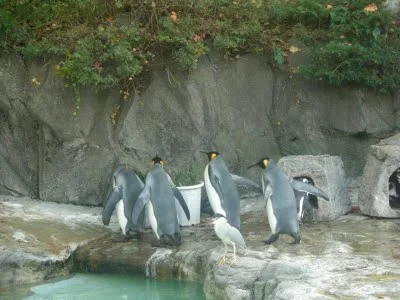Recently, the newspapers, websites and news blogs were full of analyses of Obama’s proposed visit to Hiroshima. When some of my friends told about the plan of the president to visit there, I was skeptic and told them that it will not happen. The proposed visit had some thing to do with our high school physics book.
Neither politics is a subject to ignite ideas for blog posts here nor do I intend to criticize the diplomacy of politicians. Criticism, especially negative will not yield any positive result.
The equation we learned in our physics class was e = mc2. Our physics teacher, Girijan Master explained the meaning of each component in the equation. Girijan Master was not simply a teacher for me. We at high schools used to listen to him as if we hear an interesting story when he teaches complex theories of physics. It was thus we heard more about the city of Hiroshima, far away from our home town and country, in Japan.
By the time we reached High school, we had enough general knowledge about Japan and its importance in the technology products supplying to other nations. Moreover, we heard from our history teacher regarding the heroic acts of Japanese military that triumphed over European and American power axis during World War II. The history teachers were not so serious to tell us what went wrong with the war at last.
What happened before sixty or seventy years before may not be interesting to the younger generations, but when it still can influence the lives, we have to listen to the history. Looking back more seriously to what Girijan master told us when he explained the miseries of human beings at Hiroshima and Nagasaki, I can now realize that the energy equals mass multiplied by square of speed of light has many things to do with politics, human sufferings, power shift, alignment of nations, trade and business.
Neither politics is a subject to ignite ideas for blog posts here nor do I intend to criticize the diplomacy of politicians. Criticism, especially negative will not yield any positive result.
The equation we learned in our physics class was e = mc2. Our physics teacher, Girijan Master explained the meaning of each component in the equation. Girijan Master was not simply a teacher for me. We at high schools used to listen to him as if we hear an interesting story when he teaches complex theories of physics. It was thus we heard more about the city of Hiroshima, far away from our home town and country, in Japan.
By the time we reached High school, we had enough general knowledge about Japan and its importance in the technology products supplying to other nations. Moreover, we heard from our history teacher regarding the heroic acts of Japanese military that triumphed over European and American power axis during World War II. The history teachers were not so serious to tell us what went wrong with the war at last.
What happened before sixty or seventy years before may not be interesting to the younger generations, but when it still can influence the lives, we have to listen to the history. Looking back more seriously to what Girijan master told us when he explained the miseries of human beings at Hiroshima and Nagasaki, I can now realize that the energy equals mass multiplied by square of speed of light has many things to do with politics, human sufferings, power shift, alignment of nations, trade and business.
History is not written with golden letters always. Many times it is written with a knife that has the stain of blood of many innocents. Revisiting the history needs much more political will and compassion to those innocents. It may not always come with the determination of a political group that depends on the support of majority. It is here Bertrand Russel proves himself true in saying that truth is not always absolutely true, but is what the authority or majority says. Then the chances for truth are fifty percent in the present day society. It may not be always the truth we hear as the truth is decided by the majority.
War is a crime, whoever is responsible for it. It is also true that no present-day generation can be blamed for what had happened in the past. What we can do is to learn from the past and take caution not to repeat the same mistakes that happened once in our history.
Girijan master taught us the famous energy equation on an August. That may be purely coincidence. The test ground of energy equation waited for the president which never happened. What happened in the past must not be willingly important to the present generations especially when it involves many complicated self-disgusting historical facts. We may not be able to wipe out the energy equation getting realized in many countries, but at least a caution is required to save our future generations.
This post does not attempt to find fault with anybody, but just wanted to reiterate what Girijan master taught us in our High school class. The ‘e’ that stands for energy can stand for emotion also. Then the mc (mass x velocity of light) can stand for man’s common-sense (mc). Emotions of hundreds of thousands of innocents are in the hands of common-sense of our political leaders.





























